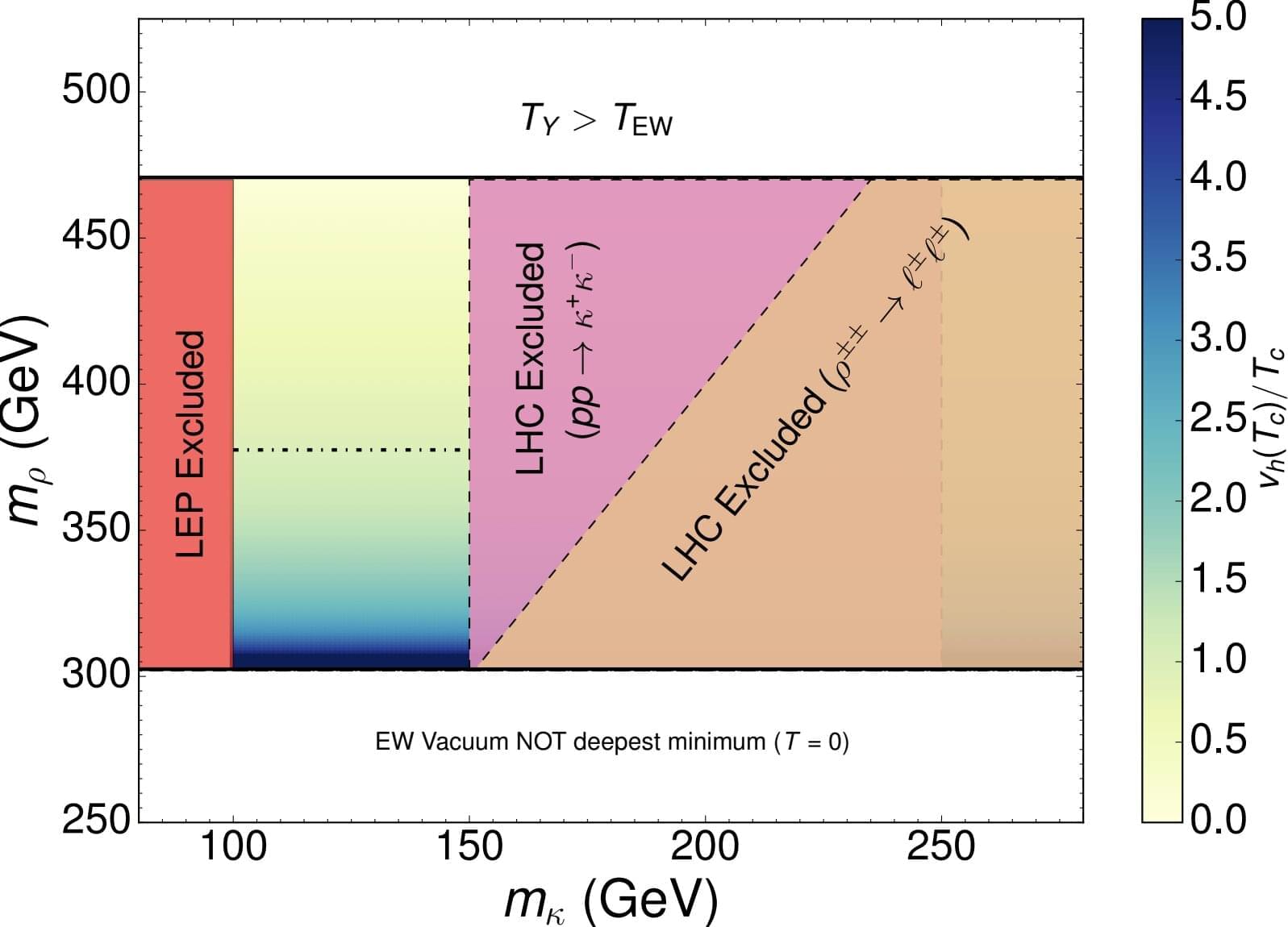The Standard Model ℠, the main physics framework describing elementary particles and the forces driving them, outlines key patterns in physical interactions referred to as gauge symmetries. One of the symmetries it describes is the so-called UY hypercharge: a gauge symmetry that contributes to the electric charge of particles before electromagnetic and weak forces become distinct (i.e., before the electroweak phase transition).
Researchers at Universidad Autónoma de Madrid’s Theoretical Physics Department (DFT) and Instituto de Física Teórica (IFT) recently carried out a study investigating how the conditions present in the early universe could prompt the spontaneous breaking of this gauge symmetry, linking this phenomenon to certain models of neutrino mass generation known as radiative neutrino mass models. Their paper, published in Physical Review Letters, specifically builds on a theoretical framework called the Zee-Babu model, an extension of the SM explaining neutrino mass generation.
“In the SM, the spontaneously broken electroweak gauge symmetry, which governs the electromagnetic and weak interactions of nature, was restored in the universe’s first instants, when the universe’s temperature was higher than the electroweak energy scale,” Prof. Jose Miguel No, Luca Merlo, Alvaro Lozano-Onrubia and Sergio López-Zurdo told Phys.org.
